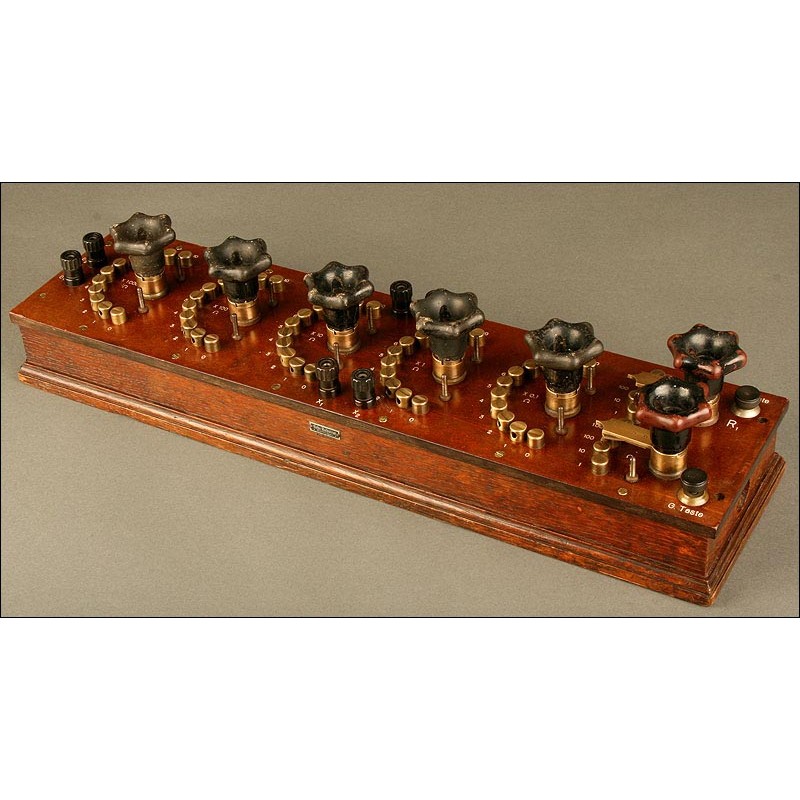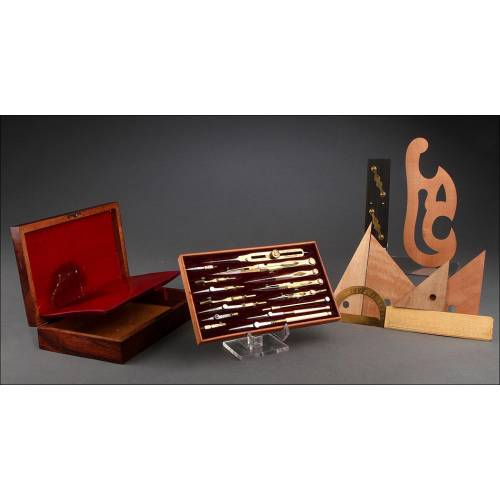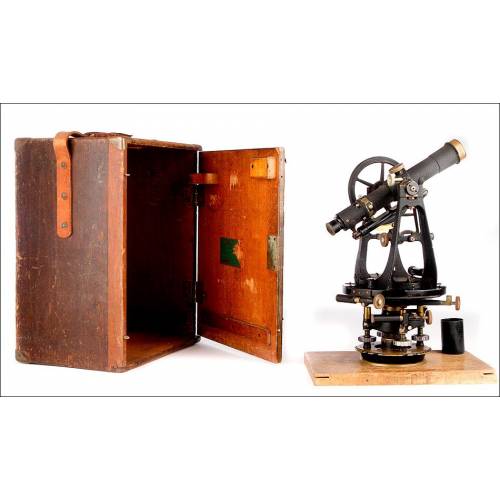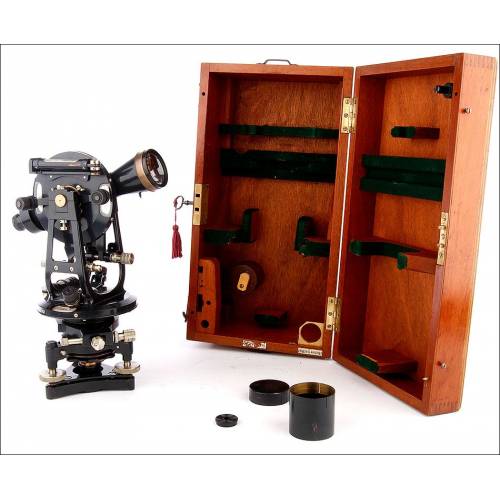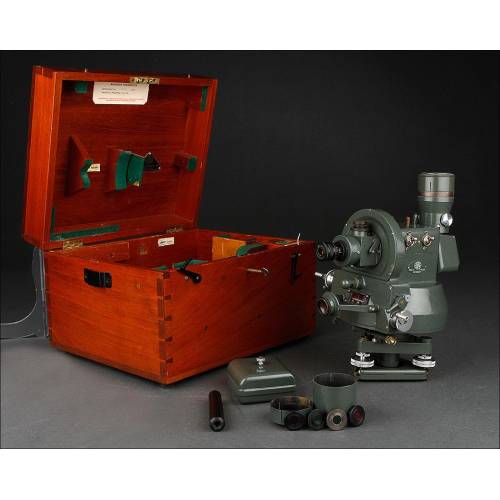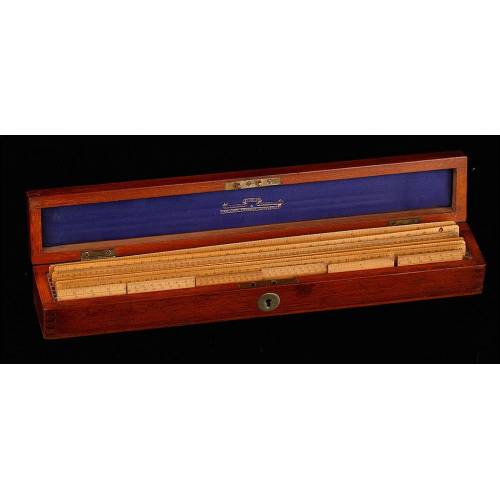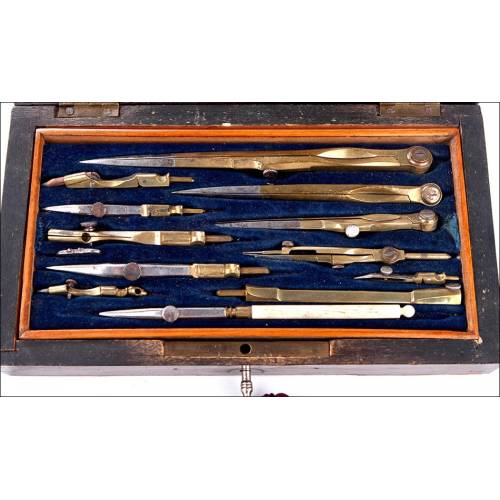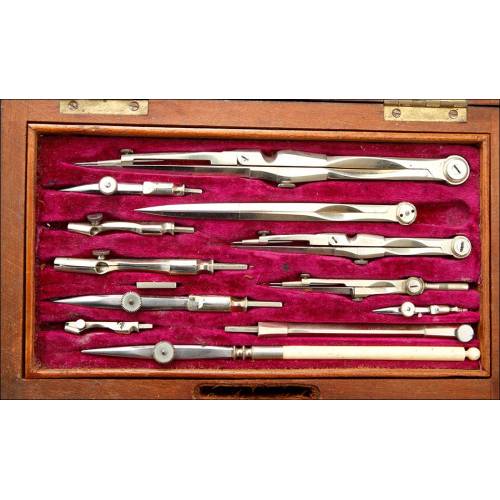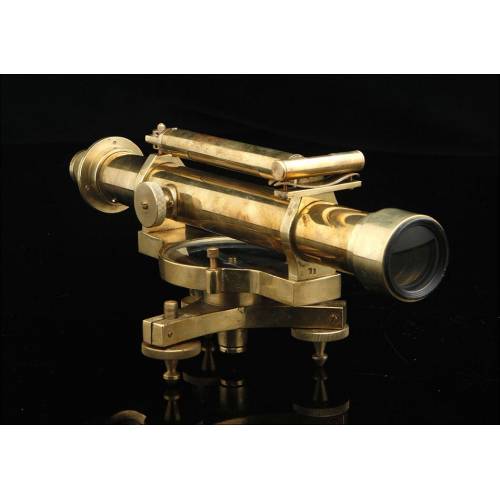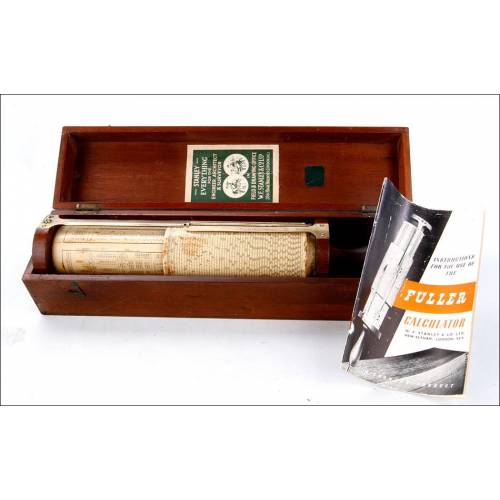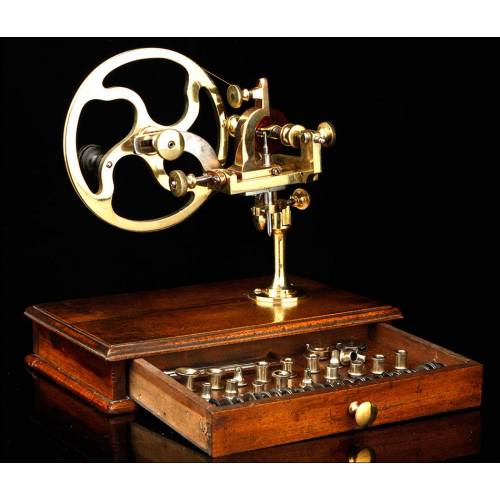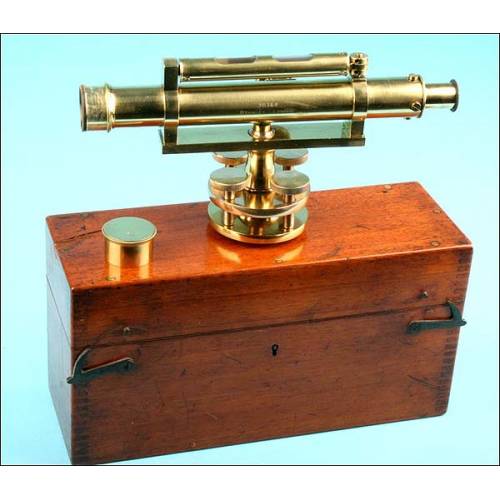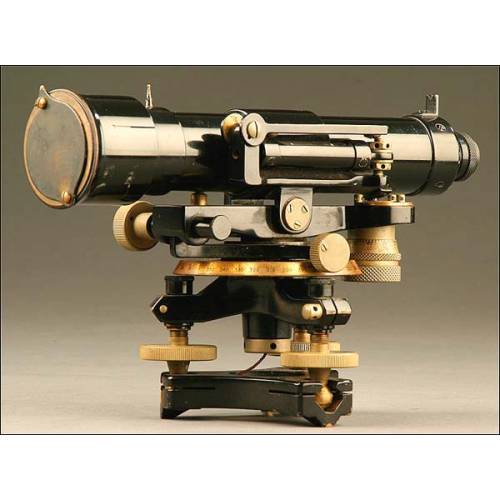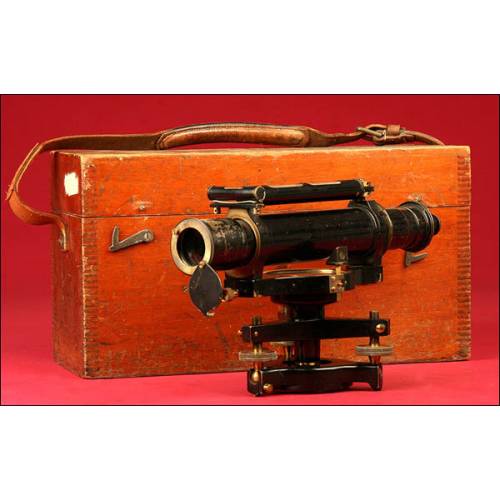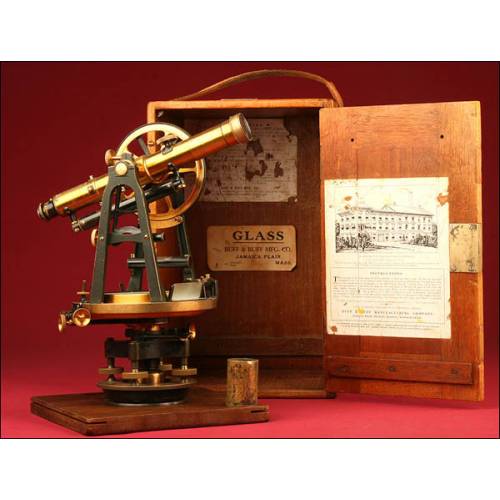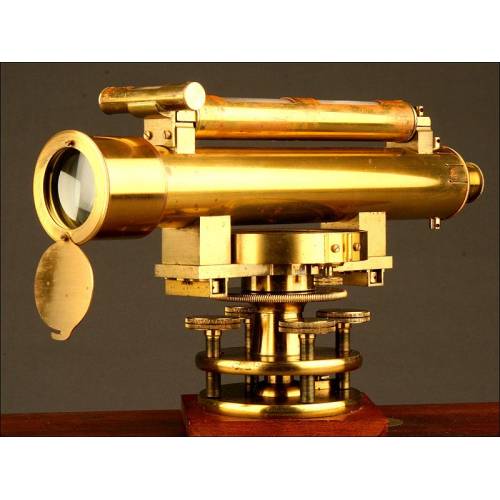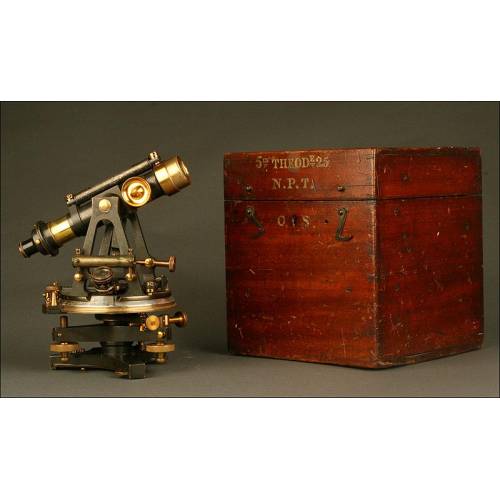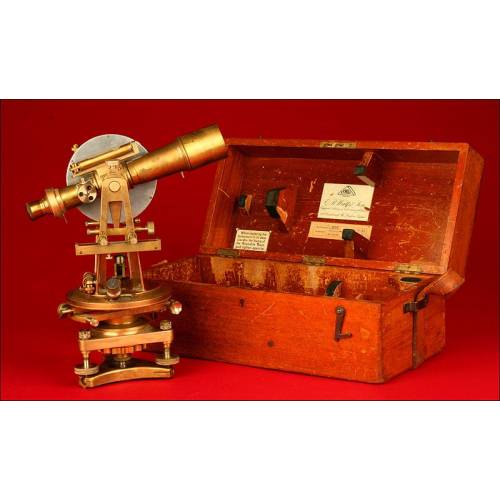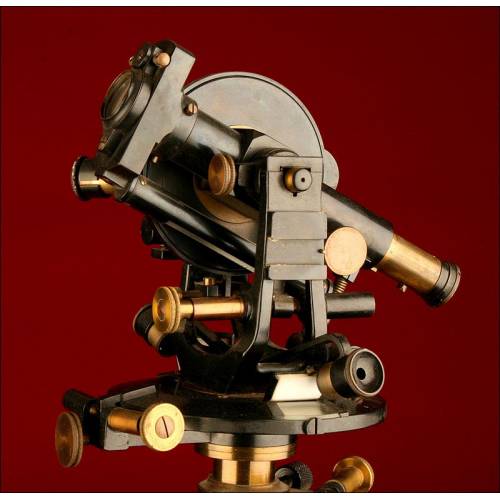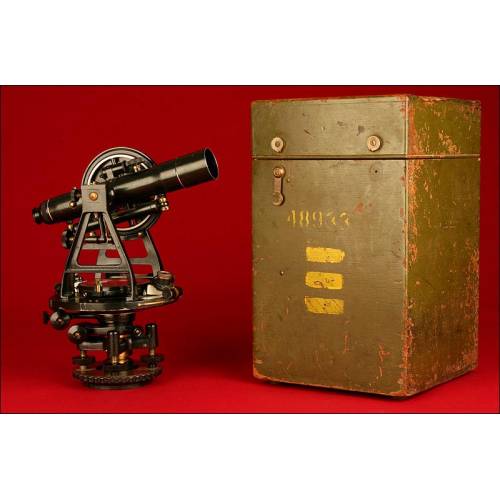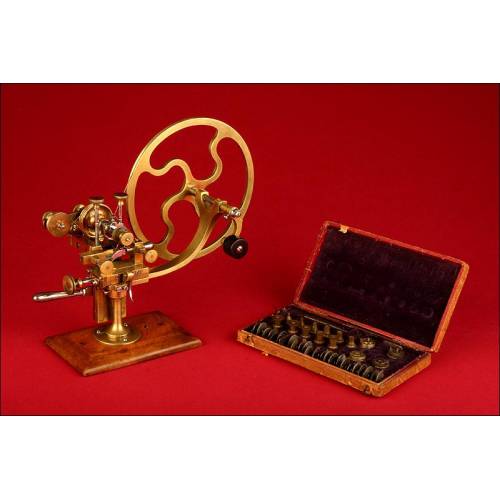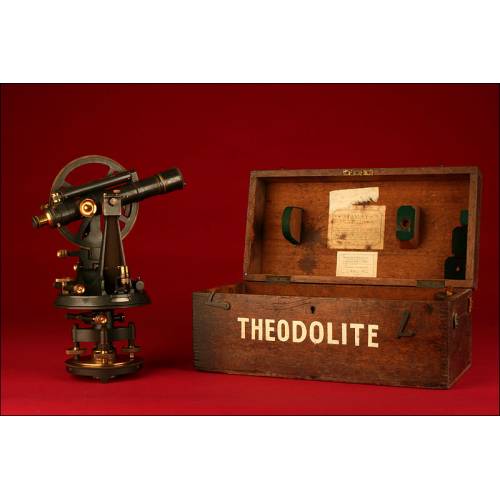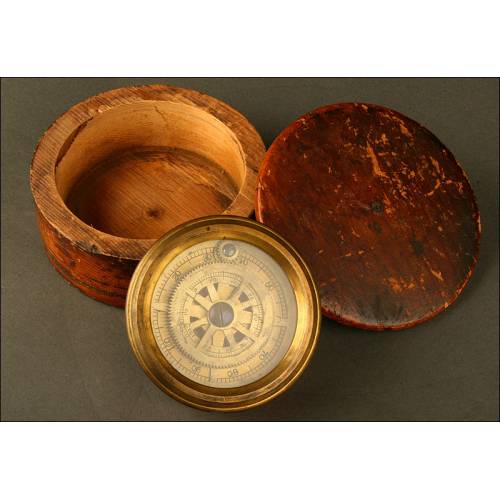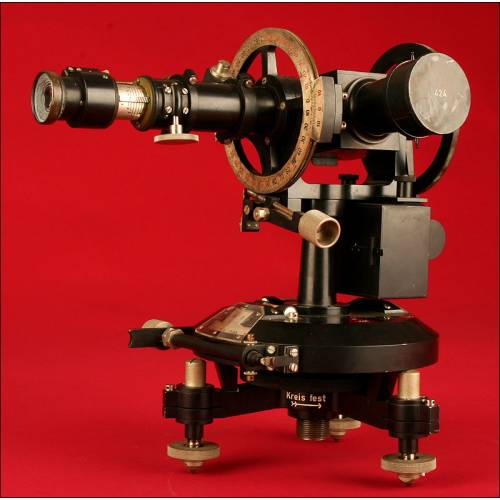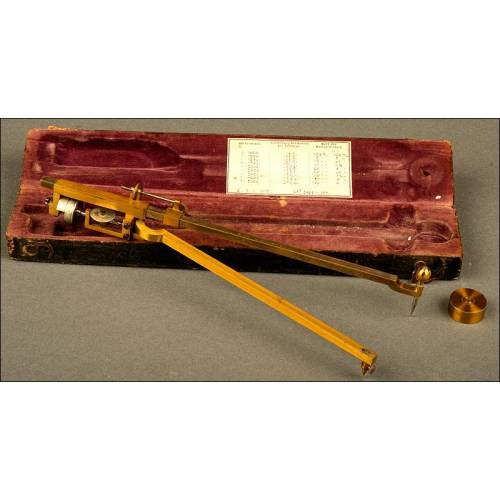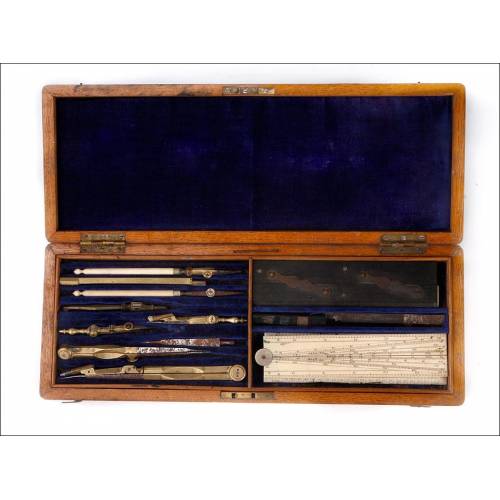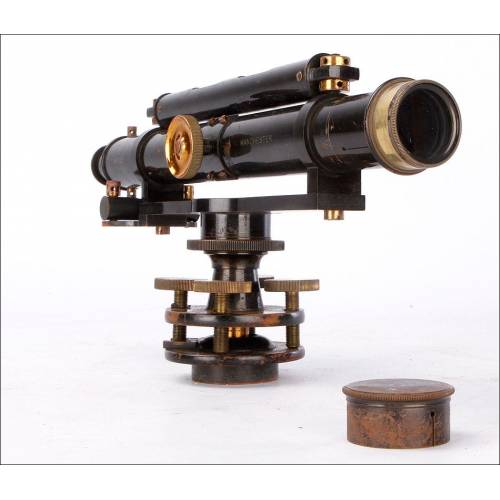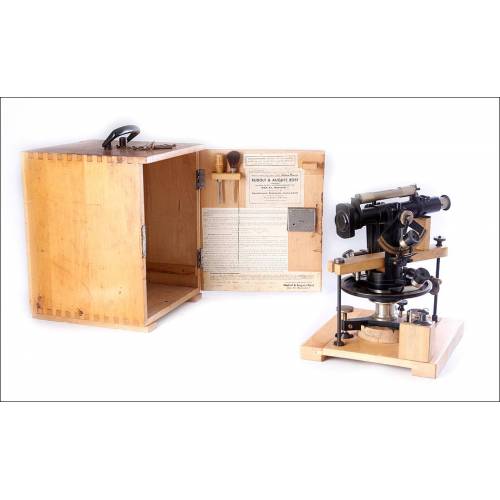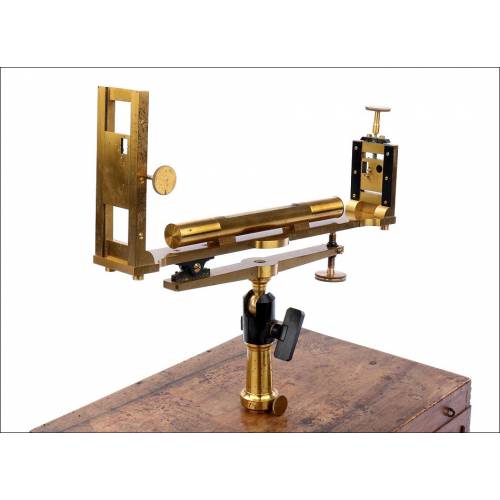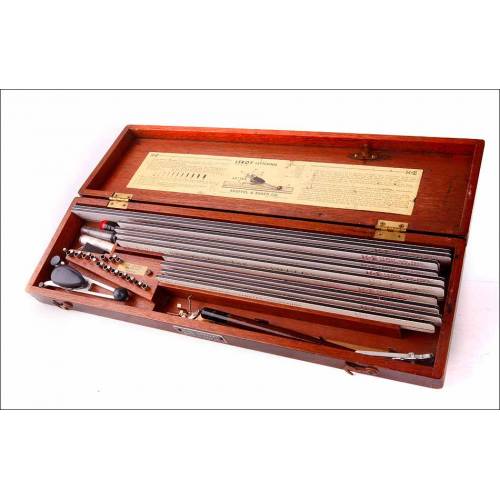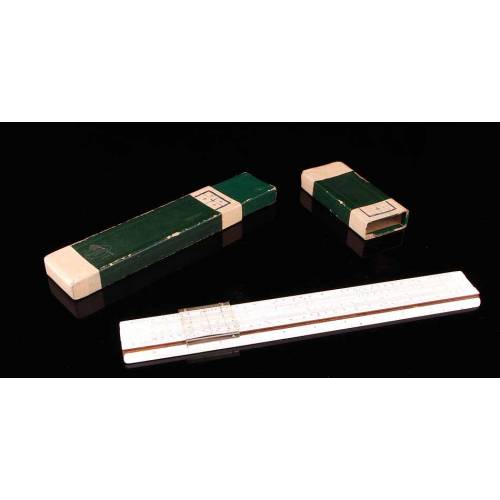J-712
Beautiful Wheashtone Bridge from the beginning of the 20th Century, Large Dimensions.
Large antique electrical resistor, manufactured in the early 20th century by Gebr. Ruhstat.
Sold!
Lovely antique and large Wheashtone bridge used to measure unknown electric resistances, made of varnished oak wood, brass and iron. It is a real exclusive item, a hundred per cent original, whose big size and careful making are stunning. It shows an elegant solid oak wood base, very well preserved, which is even more beautiful thanks to the reddish varnish that protects it. It is a device which let us connect fifty-eight resistance wires through the same number of brass terminals, which are very bright and shiny. The iron knobs show slight signs of wear, due to the old age and the use of the piece. In the wooden base, on the front we can see a small metal and black plate with an embossed inscription: Gebh. Ruhstat, Göttingen. Rushtat (before Gebh. Ruhstat) is a relevant and old German brand which makes electric resistances, and today keeps manufacturing electric industrial material. Founded in 1888 by Ruhstat brothers in Göttingen, in 1984 the firm collaborated with Nobel Prize Walter Nerst to make the adjustable sliding resistance, a real revolution in the field of electricity. If we lift the upper side of the resistance and remove it of its base, we will find fifty-eight copper-cable rings connected by different wires. These rings belong to the external terminals. The wooden base itself has two circles, one at each end, with holes to facilitate ventilation. It also shows a label with a triangular diagram and electricity related symbols. The knobs and terminals are also labeled with white numbers and letters, neat and clear. This electric resistance is not only a fine antique, but is also a real witness of the first steps in the field of industrial electricity. A luxury acquisition for any lover of scientific antiques. Measurements: 595 mm width x 130 mm height x 155 mm depth.

